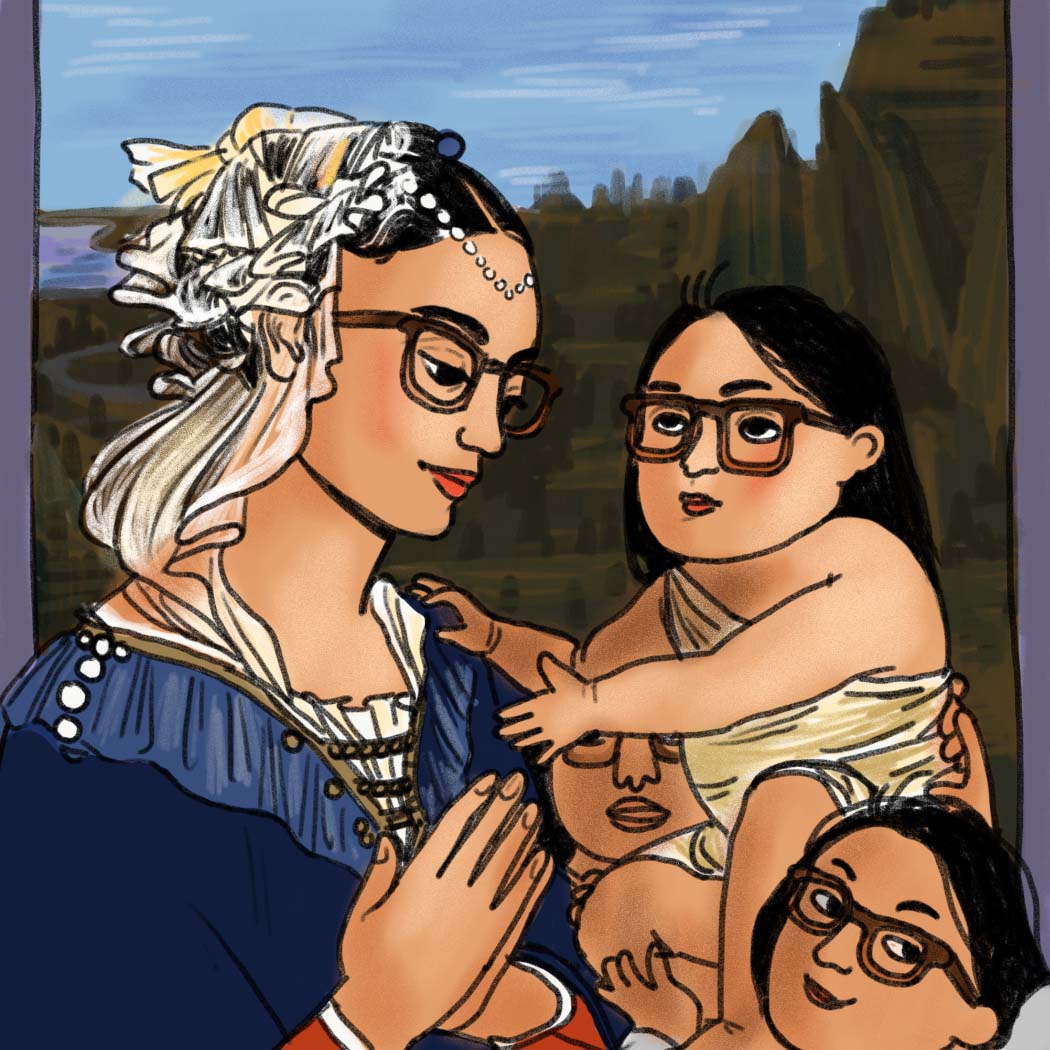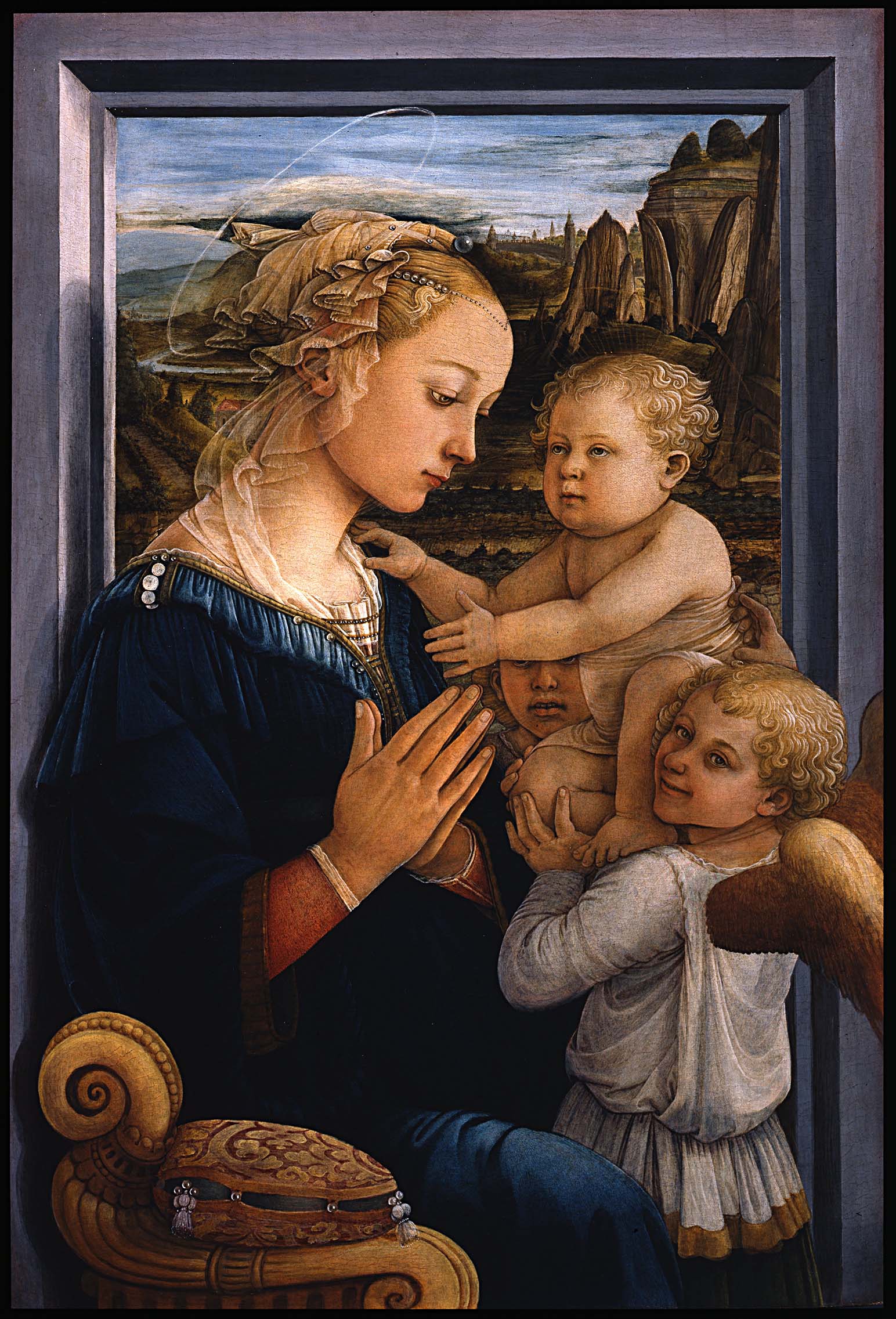21/100
The Uffizi Madonna
-
Artist
Fra Filippo Lippi
-
Year
1450-1465
-
Culture
Italian
-
Date of Copy
Throughout this project, I relished getting to draw myself as multiple people within the same painting, especially when some of them were babies. Italian Renaissance paintings gave me lots of opportunities for this. The angelic babies in them look so wise and knowing, so un-baby-like, that it's extra fun.
The Uffizi Gallery's website says that it's thought that this Madonna figure has the face of Lucrezia Buti, a nun that Fra Filippo Lippi fell in love with. Depicting real-life people into archetypal roles is a time-honored tradition. You can see that her face is painted with tenderness. Although--as I poke around more, it also looks as though Lucrezia Buti was nearly 30 years his junior (he was around 50, she around 20), and at one point he may have kidnapped her. She bore him two children. Cosimo de Medici eventually intervened with the Pope to give them a dispensation to marry, but Lippi declined. Maybe their relationship and this painting are much darker than I realized, with Lucrezia Buti being taken advantage of. It's hard to tell--through cursory web surfing, the prevailing narrative seems to be that she stayed with him by choice. But the whole story is also echoes of gossip from hundreds of years ago. I guess I'll never know for sure. That's art for you, never simply one thing: neither wholly good or bad, pure or problematic. Just like the people who make it. And the people who look at it. All you really have for sure is your personal relationship with any one art piece in the particular context you happened to encounter it in. Now that I know Lucrezia Buti's story, I'll probably look at this one more uneasily than before.
Reference image is from Wikipedia. It is now in the Uffizi Gallery.

